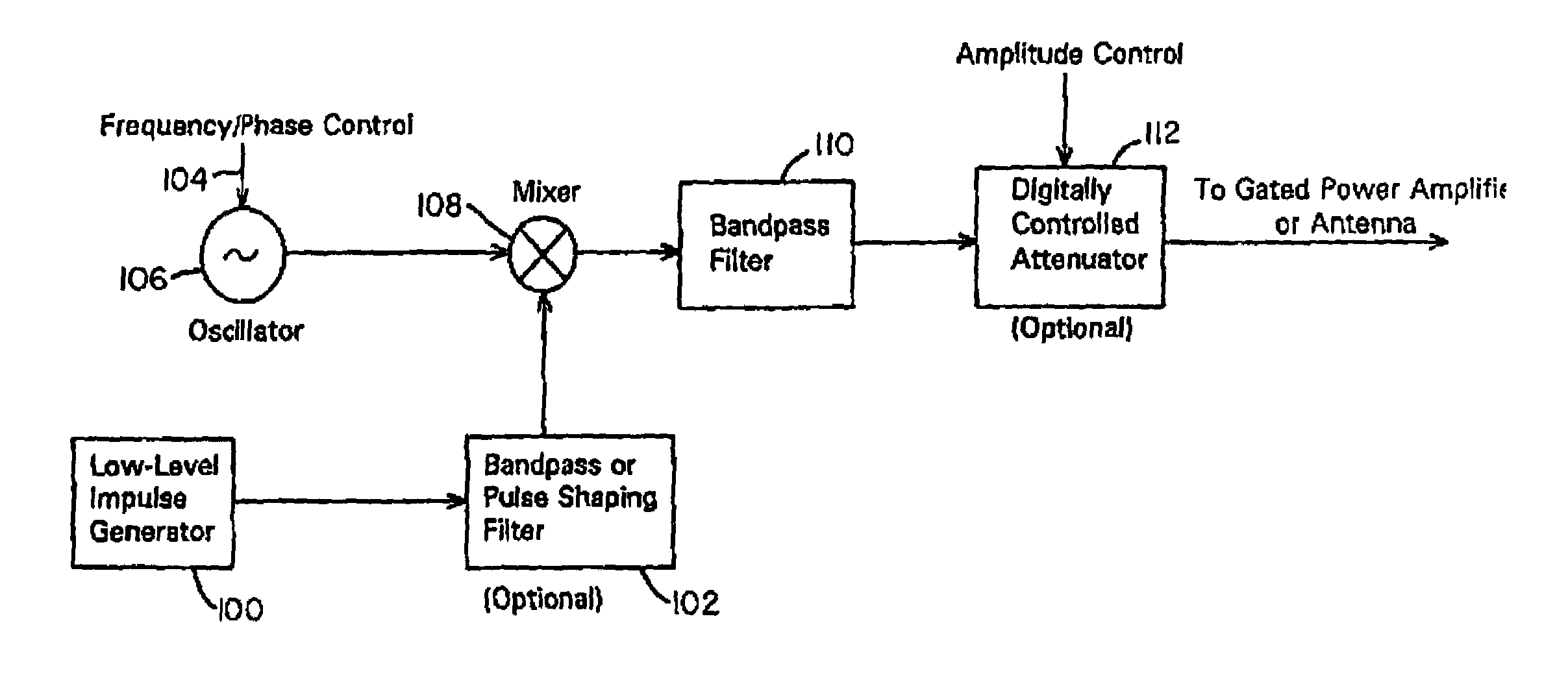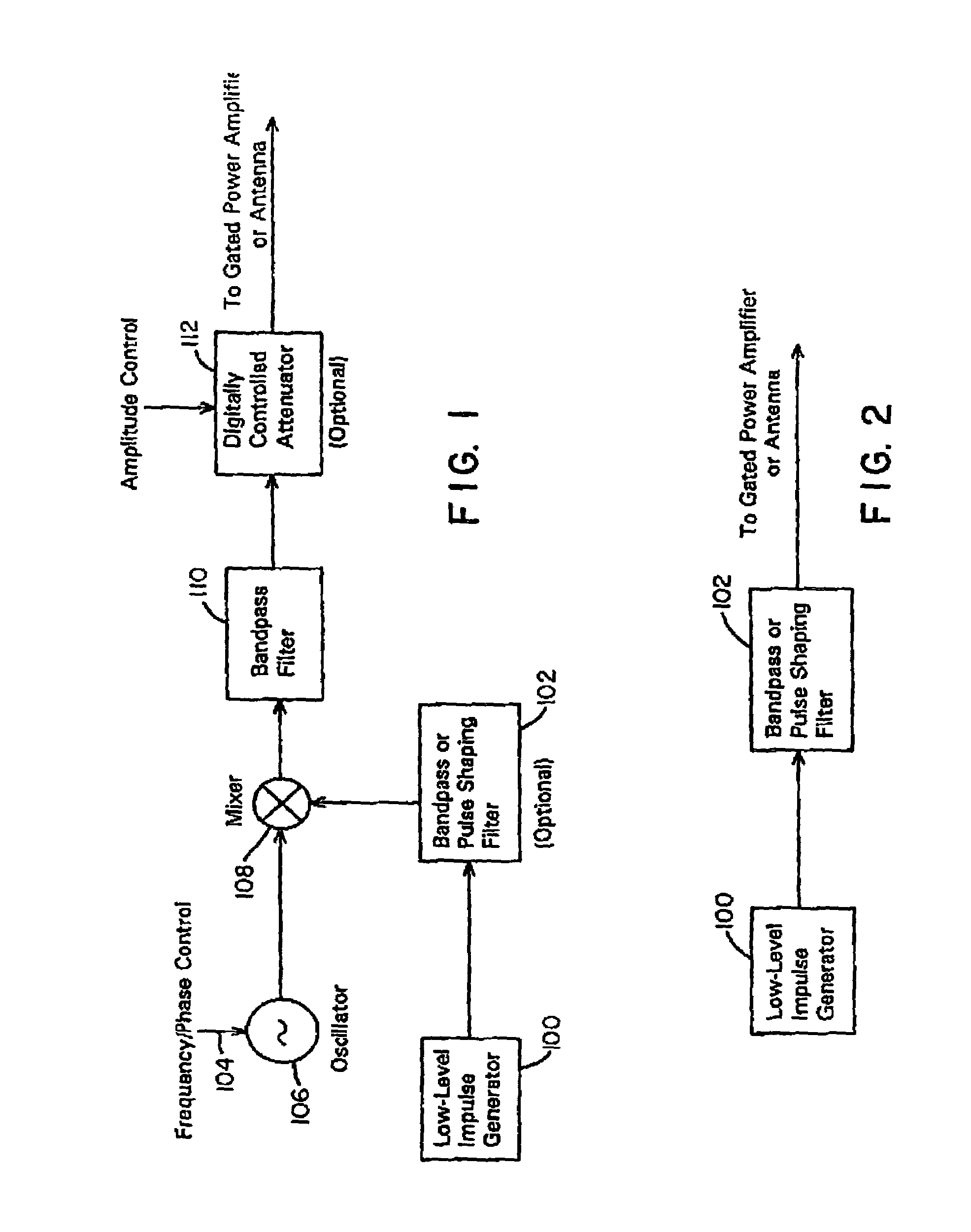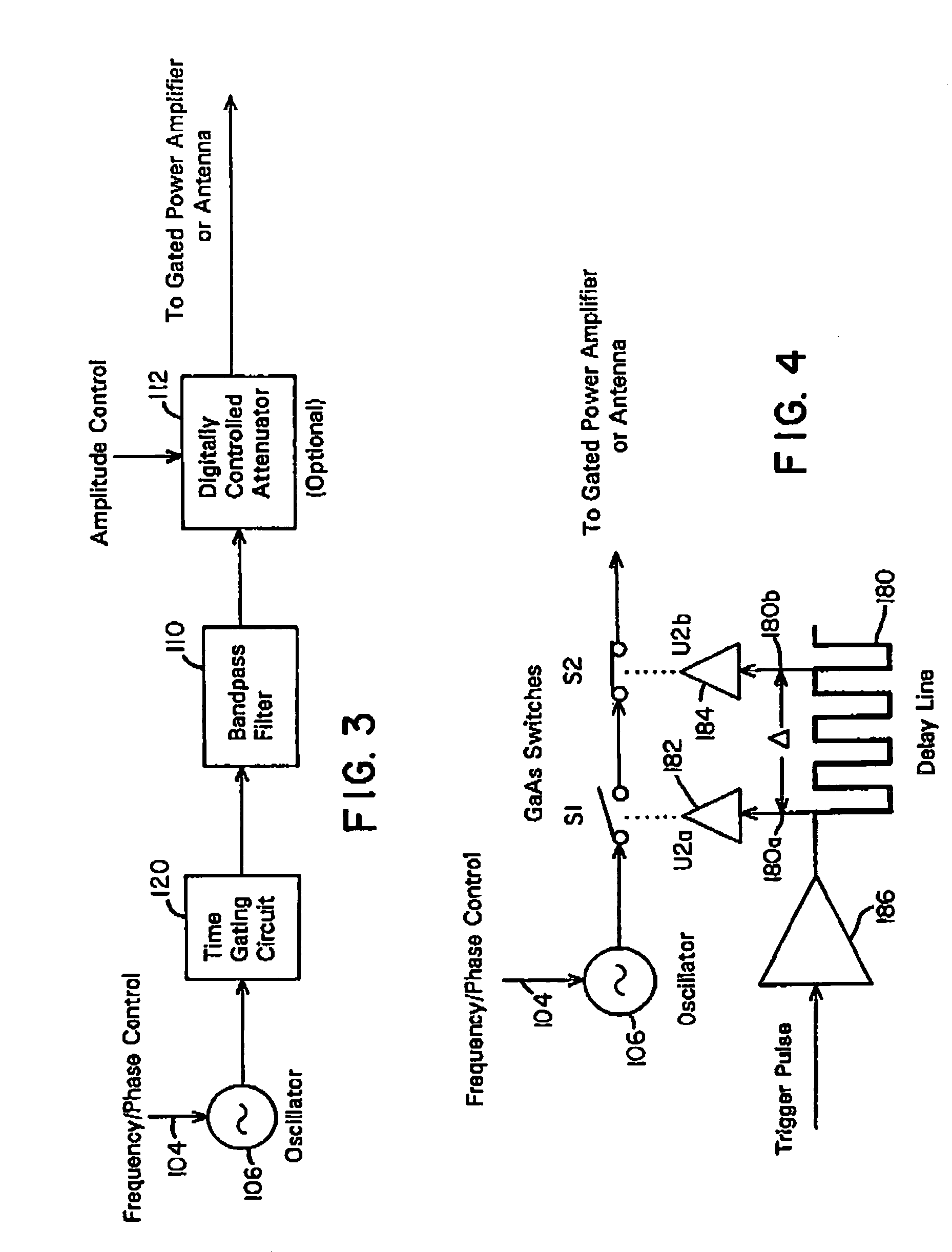Ultra-wideband receiver and transmitter
- Summary
- Abstract
- Description
- Claims
- Application Information
AI Technical Summary
Benefits of technology
Problems solved by technology
Method used
Image
Examples
first embodiment
[0132]FIG. 13 shows a simplified schematic diagram of a high speed UWB receiver according to the present invention. In FIG. 13, a received UWB pulse is input, through calibration switch S1, to a wideband, high gain RF amplifier 200. Calibration switch S1 is used to switch between an operational mode with switch S1 in the down position as shown in FIG. 13, and a calibration mode with switch S1 in the up position connecting the input of high gain RF amplifier 200 to ground through impedance matching resistor 208, which in this embodiment is 50 ohms. In the preferred mode, calibration switch S1 is switched only once after power-up and is activated by a programmable logic device or microprocessor 210.
Receiver ‘Operational Mode’
[0133]With calibration switch S1 in the operation mode position, after RF amplification, the UWB pulse is input to voltage variable attenuator (VVA) 202, whose primary function is to provide high speed, adaptive dynamic range extension. The adaptive dynamic range ...
second embodiment
[0177]This problem can be overcome by the present invention as shown in FIG. 17, which utilizes two tunnel diode detectors to allow for parallel data and noise dwells, thus allowing for even higher speed operation than that allowed by the single tunnel diode detector embodiment shown in FIG. 13. In this embodiment, all dwells are both data dwells and noise dwells.
[0178]In an UWB receiver utilizing a single tunnel diode detector, the maximum number of noise dwells that can occur for each data dwell is reduced as the data rate increases. The UWB receiver having two tunnel diode detectors—one for the detection of energy with respect to a noise threshold and the other for the detection of energy with respect to a data threshold, e.g. as shown in FIG. 17, has certain advantages over a single tunnel diode 222 design switched between a noise threshold and a data threshold as shown in FIG. 13. For instance, in a single tunnel diode design, as the data rate increases, the time between data d...
PUM
 Login to View More
Login to View More Abstract
Description
Claims
Application Information
 Login to View More
Login to View More - R&D
- Intellectual Property
- Life Sciences
- Materials
- Tech Scout
- Unparalleled Data Quality
- Higher Quality Content
- 60% Fewer Hallucinations
Browse by: Latest US Patents, China's latest patents, Technical Efficacy Thesaurus, Application Domain, Technology Topic, Popular Technical Reports.
© 2025 PatSnap. All rights reserved.Legal|Privacy policy|Modern Slavery Act Transparency Statement|Sitemap|About US| Contact US: help@patsnap.com



